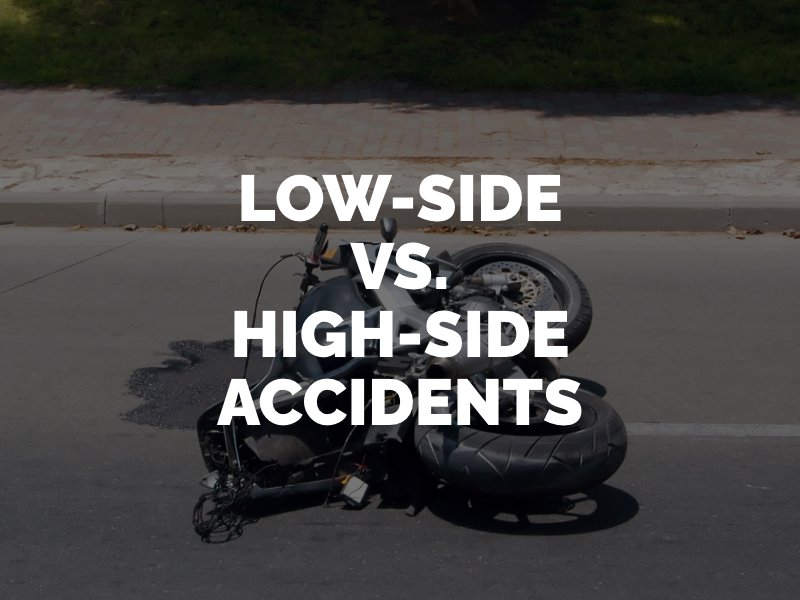What Is a High-Side and Low-Side Motorcycle Accident?
Riding a motorcycle takes a certain level of skill and expertise. Even an experienced rider, however, can make mistakes that result in accidents such as high-side and low-side crashes. If you cannot explain why your accident occurred, it is possible that an external factor was involved, such as a motorcycle part defect or unsafe road condition. This can give you the right to file a claim. Let our Los Angeles motorcycle accident attorney guide you through this process.

Understanding High-Side and Low-Side Motorcycle Crashes
A high-side motorcycle crash describes the back tire of the motorcycle losing traction and then quickly regaining it. This abrupt change makes the motorcycle unstable and difficult to control. In many cases, the sudden loss and return of traction can wobble the bike enough to throw the rider off. It may also cause the motorcycle to spin, flip or roll over. A low-side motorcycle accident occurs when either the front or back tire of the motorcycle loses traction, causing the bike to slide out from beneath the rider. This type of crash occurs when the rider is low to the ground, such as when leaning into a curve. If the motorcycle leans too far, either tire could lose its grip on the road surface and slip out.
Which Type of Motorcycle Accident Is Worse?
In general, high-side motorcycle accidents are more severe than low-side. In a high-side crash, the motorcyclist can be tossed over the handlebars, resulting in impact injuries with the road and potential collisions with other objects or vehicles. In a low-side accident, injuries caused by the rider being dragged across the asphalt are more common. However, both can inflict serious injuries, including broken bones, road rash, head injuries, traumatic brain injuries, back and neck injuries, and internal injuries.
How Can You Prevent High-Side and Low-Side Motorcycle Accidents?
Experienced motorcyclists know how to prevent most accidents caused by a loss of tire traction. For example, they reduce their speeds while taking turns to maintain their delicate balance. Recognizing what causes low-side and high-side motorcycle accidents can put you in a better position to prevent them. In general, low-side motorcycle accidents are caused by the front or rear wheel losing traction in the middle of a turn (not the start of the turn). This can occur due to the biker taking the corner too quickly, accelerating too much in the middle of the curve, hitting the brakes too hard mid-corner, or riding on worn-out or bald tires. High-side accidents can be prevented by maintaining a safe and reasonable speed based on the conditions. Trail braking too hard, especially on a wet or slippery road, can cause the rear tire to lose traction. Downshifting too fast before a corner or accelerating out of a turn too soon can also lock up the rear wheel. Finally, leaning too far into a curve can cause a high-side crash.
Can Someone Be Held Liable for This Type of Motorcycle Accident?
Depending on the circumstances, you may be able to file an insurance claim or personal injury lawsuit against another party after being injured in a low-side or high-side motorcycle accident. Even if no one else was involved, you may have grounds to hold the manufacturer of the motorcycle or a government agency responsible. For example, if the tires of your motorcycle contained a defect that contributed to the crash, you could file a product liability claim against the manufacturer. If a road hazard such as loose gravel caused the accident, the government agency in charge of road maintenance and safety could be held liable. Contact an experienced injury attorney in Los Angeles to investigate your high-side or low-side crash for signs of negligence. Your attorney can determine the cause of the crash using experts and collect evidence to prove your case against one or more parties. A lawyer will negotiate with the parties involved to secure maximum financial compensation for your losses.
